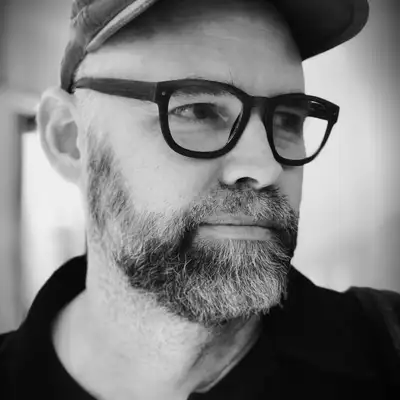
Incubating quantum innovation with Vijoy Pandey of Outshift by Cisco
Vijoy Pandey joins Sebastian Hassinger for this episode of The New Quantum Era to discuss Cisco's ambitious vision for quantum networking—not as a far-future technology, but as infrastructure that solves real problems today. Leading Outshift by Cisco, their incubation group and Cisco Research, Vijoy explains how quantum networks are closer than quantum computers, why distributed quantum computing is the path to scale, and how entanglement-based protocols can tackle immediate classical challenges in security, synchronization, and coordination. The conversation spans from Vijoy's origin story building a Hindi chatbot in the late 1980s to Cisco's groundbreaking room-temperature quantum entanglement chip developed with UC Santa Barbara, and explores use cases from high-frequency trading to telescope array synchronization.
Guest Bio
Vijoy Pandey is Senior Vice President at Outshift by Cisco, the company's internal incubation group, where he also leads Cisco Research and Cisco Developer Relations (DevNet). His career in computing began in high school building AI chatbots, eventually leading him through distributed systems and software engineering roles including time at Google. At Cisco, Vijoy oversees a portfolio spanning quantum networking, security, observability, and emerging technologies, operating at the intersection of research and product incubation within the company's Chief Strategy Office.
Key Topics
From research to systems: How Cisco's quantum work is transitioning from physics research to systems engineering, focusing on operability, deployment, and practical applications rather than building quantum computers.
The distributed quantum computing vision: Cisco's North Star is building quantum network fabric that enables scale-out distributed quantum computing across heterogeneous QPU technologies (trapped ion, superconducting, etc.) within data centers and between them—making "the quantum network the solution" to quantum's scaling problem and classical computing's physics problem.
Room-temperature entanglement chip: Cisco and UC Santa Barbara developed a prototype photonic chip that generates 200 million entangled photon pairs per second at room temperature, telecom wavelengths, and less than 1 milliwatt power—enabling deployment on existing fiber infrastructure without specialized equipment.
Classical use cases today: How quantum networking protocols solve present-day problems in synchronization (global database clocks, telescope arrays), decision coordination (high-frequency trading across geographically distributed exchanges), and security (intrusion detection using entanglement collapse) without requiring massive qubit counts or cryogenic systems.
Quantum telepathy for HFT: The concept of using entanglement and teleportation to coordinate decisions across locations faster than the speed of light allows classical communication—enabling fairness guarantees for high-frequency trading across data centers in different cities.
Meeting customers where they are: Cisco's strategy to deploy quantum networking capabilities alongside existing classical infrastructure, supporting a spectrum from standard TLS to post-quantum cryptography to QKD, rather than requiring greenfield deployments.
The transduction grand challenge: Why building the "NIC card" that connects quantum processors to quantum networks—the transducer—is the critical bottleneck for distributed quantum computing and the key technical risk Cisco is addressing.
Product-company fit in corporate innovation: How Outshift operates like internal startups within Cisco, focusing on problems adjacent to the company's four pillars (networking, security, observability, collaboration) with both technology risk and market risk, while maintaining agility through a framework adapted from Cisco's acquisition integration playbook.
Why It Matters
Cisco's systems-level approach to quantum networking represents a paradigm shift from viewing quantum as distant future technology to infrastructure deployable today for specific high-value use cases. By focusing on room-temperature, telecom-compatible entanglement sources and software stacks that integrate with existing networks, Cisco is positioning quantum networking as the bridge between classical and quantum computing worlds—potentially accelerating practical quantum applications from decades away to 5-10 years while solving immediate enterprise challenges in security and coordination.
Episode Highlights
Vijoy's journey from building Hindi chatbots on a BBC Micro in the late 1980s to leading quantum innovation at Cisco.
Why quantum networking is "here and now" while quantum computing is still being figured out.
The spectrum of quantum network applications: from near-term classical coordination problems to the long-term quantum internet connecting quantum data centers and sensors.
How entanglement enables provable intrusion detection on standard fiber networks alongside classical IP traffic.
The "step function moment" coming for quantum: why the transition from physics to systems engineering means a ChatGPT-like breakthrough is imminent, and why this one will be harder to catch up on than software-based revolutions.
Design partner collaborations with financial services, federal agencies, and energy companies on security and synchronization use cases.
Cisco's quantum software stack prototypes: Quantum Compiler (for distributed quantum error correction), Quantum Alert (security), and QuantumSync (decision coordination)."
Guest Bio
Vijoy Pandey is Senior Vice President at Outshift by Cisco, the company's internal incubation group, where he also leads Cisco Research and Cisco Developer Relations (DevNet). His career in computing began in high school building AI chatbots, eventually leading him through distributed systems and software engineering roles including time at Google. At Cisco, Vijoy oversees a portfolio spanning quantum networking, security, observability, and emerging technologies, operating at the intersection of research and product incubation within the company's Chief Strategy Office.
Key Topics
From research to systems: How Cisco's quantum work is transitioning from physics research to systems engineering, focusing on operability, deployment, and practical applications rather than building quantum computers.
The distributed quantum computing vision: Cisco's North Star is building quantum network fabric that enables scale-out distributed quantum computing across heterogeneous QPU technologies (trapped ion, superconducting, etc.) within data centers and between them—making "the quantum network the solution" to quantum's scaling problem and classical computing's physics problem.
Room-temperature entanglement chip: Cisco and UC Santa Barbara developed a prototype photonic chip that generates 200 million entangled photon pairs per second at room temperature, telecom wavelengths, and less than 1 milliwatt power—enabling deployment on existing fiber infrastructure without specialized equipment.
Classical use cases today: How quantum networking protocols solve present-day problems in synchronization (global database clocks, telescope arrays), decision coordination (high-frequency trading across geographically distributed exchanges), and security (intrusion detection using entanglement collapse) without requiring massive qubit counts or cryogenic systems.
Quantum telepathy for HFT: The concept of using entanglement and teleportation to coordinate decisions across locations faster than the speed of light allows classical communication—enabling fairness guarantees for high-frequency trading across data centers in different cities.
Meeting customers where they are: Cisco's strategy to deploy quantum networking capabilities alongside existing classical infrastructure, supporting a spectrum from standard TLS to post-quantum cryptography to QKD, rather than requiring greenfield deployments.
The transduction grand challenge: Why building the "NIC card" that connects quantum processors to quantum networks—the transducer—is the critical bottleneck for distributed quantum computing and the key technical risk Cisco is addressing.
Product-company fit in corporate innovation: How Outshift operates like internal startups within Cisco, focusing on problems adjacent to the company's four pillars (networking, security, observability, collaboration) with both technology risk and market risk, while maintaining agility through a framework adapted from Cisco's acquisition integration playbook.
Why It Matters
Cisco's systems-level approach to quantum networking represents a paradigm shift from viewing quantum as distant future technology to infrastructure deployable today for specific high-value use cases. By focusing on room-temperature, telecom-compatible entanglement sources and software stacks that integrate with existing networks, Cisco is positioning quantum networking as the bridge between classical and quantum computing worlds—potentially accelerating practical quantum applications from decades away to 5-10 years while solving immediate enterprise challenges in security and coordination.
Episode Highlights
Vijoy's journey from building Hindi chatbots on a BBC Micro in the late 1980s to leading quantum innovation at Cisco.
Why quantum networking is "here and now" while quantum computing is still being figured out.
The spectrum of quantum network applications: from near-term classical coordination problems to the long-term quantum internet connecting quantum data centers and sensors.
How entanglement enables provable intrusion detection on standard fiber networks alongside classical IP traffic.
The "step function moment" coming for quantum: why the transition from physics to systems engineering means a ChatGPT-like breakthrough is imminent, and why this one will be harder to catch up on than software-based revolutions.
Design partner collaborations with financial services, federal agencies, and energy companies on security and synchronization use cases.
Cisco's quantum software stack prototypes: Quantum Compiler (for distributed quantum error correction), Quantum Alert (security), and QuantumSync (decision coordination)."


